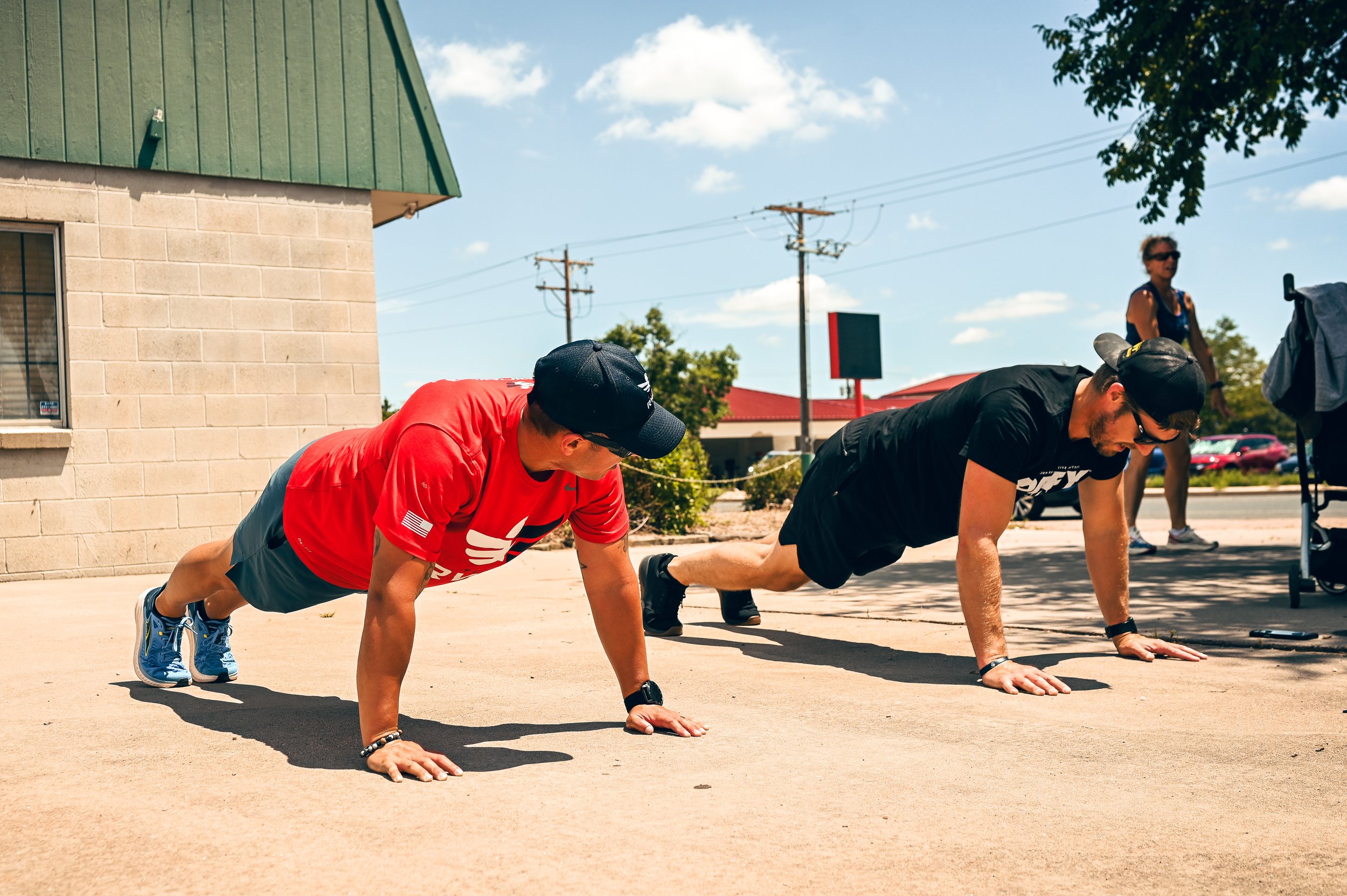5 Types of Push-Ups for Every Fitness Level
Alright, Eagles, drop and give me… well, not just any ol’ push-up. We’re about to dive into five variations that’ll help you improve your upper body strength in no time.
Push-ups are a great bodyweight exercise. They’re simple, effective, and, as you know, can be done anywhere.
That’s why they’re a prominent feature in bootcamp and PT. But we’re here to help you kick it up a notch.
In this post, we’re breaking down five push-up variations that’ll challenge your muscles in new ways and keep your workouts fresh. From the classic military push-up (where it all started) to the one-arm beast that’ll have you questioning your life choices, we’ve got a push-up for every fitness level.
So, whether you’re a push-up pro or still working on your first full rep, get ready to push your limits (pun intended).
Military Push-Up
A military or strict push up is the classic push-up.
Start in a plank position. Maintain a neutral spine as you squeeze your shoulders, glutes, and core while bending your elbows to move towards the floor. Lower your body until your elbows reach a 45 degree angle. Then push yourself back up into the original plank position.
You can modify this push-up by keeping your knees bent on the floor.
As you progress, you can make this push-up more challenging by lowering your chest all the way to the ground before pushing yourself back up.
Level: Beginner
Muscles Worked: Chest, deltoids, triceps, upper back and core
Wide Hands Push-Up
A wide hands push up is a military push up but your hands are further out to the side rather than right under your shoulders.
To do a wide hands push up, get in a plank position. Then move your hands out to the side so they are 2.5 - 3 feet apart. Move through the push-up as you would if it were a military push-up. Be sure to keep your elbows tucked towards your sides.
You can also modify this push-up by keeping your knees bent on the floor.
Level: Intermediate
Muscles Worked: Same as a military push up but more emphasis is placed on your deltoids
Shoulder Tap Push-Up
A shoulder tap push-up is a military push where you lift one hand off of the ground to tap the opposite shoulder between each rep. It provides a balance challenge while targeting your core and shoulder muscles.
To do a shoulder tap push-up, get in a plank position. Move through a military push up and pause when you get to the top. Lift one hand and tap the opposite shoulder. Alternate which hand you lift up after each rep.
You can make this push up more challenging by tapping one shoulder and then the other before going back down into a push-up.
Level: Intermediate
Muscles Worked: Deltoids and core with less emphasis on the chest, triceps and upper back
Sphinx Push-Up
Want to target your triceps? Do a sphinx push-up.
Start in a plank position but with your forearms flat on the ground. Make sure they’re shoulder-width apart and parallel, making the number 11. Then push up with your triceps to lift your elbows off of the ground. Continue until your arms are fully extended. Then lower your elbows until they’re hovering above the ground. Head back on up and repeat as many reps as your triceps can muster.
Level: Advanced
Muscles Worked: Triceps and core with less emphasis on deltoids, chest, and upper back
One-Arm Push-Up
This push up is just like it sounds - a military push-up but all of your weight is on one arm.
Get into a plank position. Place one arm centered below your chest and one on your back behind you. Maintain a flat, neutral back and level hips as you go down and up for your reps.
Level: Advanced
Muscles Worked: Core, chest, deltoids, triceps, and upper back
Want to level up your functional fitness game?
Join the Functional Fitness Activity Group in the Team RWB Member App and connect with service members from all branches and eras. They share workouts, tips and information to help you achieve your fitness goals.


